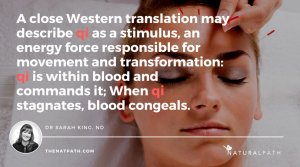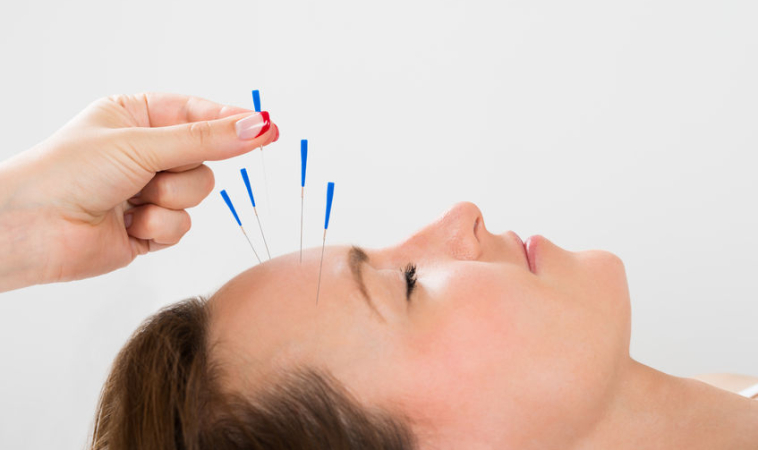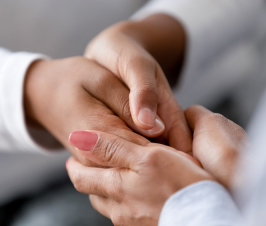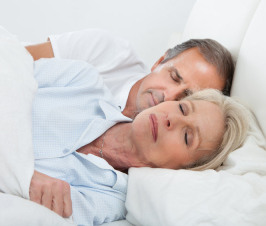Looking to Achieve a Healthy Glow?
Anti-aging products, procedures and techniques have become popular among women looking for a youthful appearance. Although women in their 40s, 50s, and 60s may seek more pronounced effects, even younger women may look to achieve a “healthy glow,” smaller pores, and reduced acne and puffiness. It’s important to address that aging, and skin appearance in general, is a reflection of internal health, and therefore, cosmetic procedures and products are not a complete “fix.” However, facial acupuncture, also called facial revitalization or rejuvenation acupuncture, may provide a non-invasive approach to improve the look, texture and contour of facial skin, while providing a whole-body support for circulation and anti-aging processes on a cellular level.
“Acupuncture Face-lift”
 Often referred to as an “acupuncture face-lift,” facial rejuvenation acupuncture (FRA) is a virtually painless treatment aimed at enhancing facial muscle and skin tone without the need of injections or surgical procedures.1 Although it may seem like a purely cosmetic treatment, the process and protocols are based on the root principles of Traditional Chinese Medicine (TCM). There’s an accepted principle in TCM that, “Where qi goes, blood flows.”1 A close Western translation may describe qi as a stimulus, an energy force responsible for movement and transformation2: qi is within blood and commands it; When qi stagnates, blood congeals. As circulation increases, body tissues become nourished.
Often referred to as an “acupuncture face-lift,” facial rejuvenation acupuncture (FRA) is a virtually painless treatment aimed at enhancing facial muscle and skin tone without the need of injections or surgical procedures.1 Although it may seem like a purely cosmetic treatment, the process and protocols are based on the root principles of Traditional Chinese Medicine (TCM). There’s an accepted principle in TCM that, “Where qi goes, blood flows.”1 A close Western translation may describe qi as a stimulus, an energy force responsible for movement and transformation2: qi is within blood and commands it; When qi stagnates, blood congeals. As circulation increases, body tissues become nourished.
As circulation increases, body tissues become nourished
Increased circulation in general can help the body to look and feel better. These same principles have been used as the basis for many hydrotherapy techniques with the application of hot and cold water preparations. An example of this would be the use of alternating the use of a hot tub or sauna with a cold plunge or cold shower, often found in hydrotherapy spas.
Acupuncture channels run along different areas of the body, each of which flow through a major organ. Needling techniques can be used to create either a tonifying effect or a relaxing effect. For example, tonification techniques may be used to help stimulate muscle tone, whereas relaxation may be applied to reduce inflammation.2
Though we may not immediately think of facial acupuncture as being therapeutic, it’s crucial that all of these principles from TCM be applied for optimal health. For example, during facial rejuvenation acupuncture, there are distal points on the hands, feet and legs that are also needled. If only the face were needled, it could stimulate too much movement up to the head/face and could lead to a headache.
The Treatment
A 1996 report in the International Journal of Clinical Acupuncture reported that among 300 cases treated in China, 90% had a noticeable effect with just 1 course of treatment.1 These results included: improved skin texture, tone, and elasticity, and a reduction of wrinkles.1 Typically, though, treatment plans are often based on 10-12 sessions. At least 1 session per week is recommended, however, having 2 sessions per week for the first 3 weeks, then once a week thereafter, seems to be more effective.1 Beyond that, results can last years, but monthly or annual maintenance visits may be recommended.2
Most needles used on the face are inserted subcutaneously and are generally a half inch to one inch long, though the entire needle is never inserted fully. Intradermal needles are specialized facial acupuncture needles that are made entirely of surgical stainless steel. Measuring only 6mm long and 0.14mm thick, these tiny intradermals need to be inserted using tweezers. In particular, by threading them partially under the skin, they are highly effective for plumping up and eliminating fine lines, and minimizing the appearance of deep lines. With the proper technique, they can also be used to minimize acne and facial scarring, and improve healing time for active acne lesions.
Considered a health and wellness intervention, FRA treatments can be enhanced with self-facial massage, suggested dietary changes, and in the case of fine lines, practicing awareness of tensing certain facial muscles.2 For example, some people tend to clench their jaws, or furrow their brows, or hold a particular facial expression without even realizing it. We hold these muscles tensely out of habit, but those habits can cause constant tension of certain facial muscles which affects the skin and skin lines that lay connected to them.
What do the results look like?
The effects will always vary according to the individual’s previous (pre-treatment) condition and lifestyle, as well as the experience and skill level of the practitioner.1 Therefore, there are no guaranteed results. However, the most common areas of improvements are often seen as:
- Elimination of fine lines and a diminishing of deeper lines and wrinkles
- A decrease in facial swelling and puffiness
- Increased facial muscle tone
- Decreased sagging around the eyes, cheeks, chin, and neck
- Improved skin texture, including tighter pores
- A reduction in the appearance of acne
- Minimized acne scars
Results can persist for years. The best way to visualize changes is through photographs. Take a picture of yourself at baseline and again every few months. Be sure to be positioned in the same spot, under the same exact lighting, and at the same distance to the camera for the most accurate representation.
How does acupuncture physically reduce aging?
One of the many explanations is that when you insert an acupuncture needle, the body endures a micro-trauma that stimulates collagen formation as part of the body’s natural repairing system.1 The pathways that are activated lead to regeneration of the dermis and epidermis with the production of new collagen and elastin proteins.1
This theory coincides with multiple animal studies that have shown that acupuncture treatment can induce gene transcription, producing proteins3, such as collagen and elastin. In the case of acne and inflammation, by increasing local circulation, we assist in facilitating wound healing, which will lead to revitalized tissues.1
Tools such as Moire topography have often been used in studies of facial palsy, fractures, and plastic surgery, as an optical measurement focusing on facial shape and contour. One preliminary study was able to measure differences after 5 FRA treatment sessions using this technology.4 Improvements were also reported in self-assessment of elasticity in women aged 40-59 years.4
Researchers have been able to Measure the Physiological Anti-aging effects that take Place with Acupuncture
On a cellular level, researchers have been able to measure the physiological anti-aging effects that take place with acupuncture in animal models. One of the causes of aging is cellular damage and rupture from free radicals. Antioxidants are often used in anti-aging protocols and products because they are able to scavenge and eliminate free radicals. In the case where the concentration of free radicals outweighs the concentration of available antioxidants in the area, we can get cellular damage.3 Studies have shown that acupuncture enhances the activity of antioxidases, actively increasing serum levels of superoxide dismutase while decreasing the concentration of lipid peroxides.3 Therefore, aging is slowed by decreasing the damage from free radicals.
Additionally, other studies have demonstrated that acupuncture may protect liver cells from damage (as a measure of serum liver enzymes), and can enhance the function macrophages and phagocytosis in the liver.3 As proper liver function plays a role in skin health, the positive effects of FRA may be partially attributed to this effect.
Conclusions
Acupuncture is an excellent alternative for cosmetic surgery, and other potentially dangerous procedures. Not just localized to the face, FRA is extremely thorough, considering the whole body and choosing acupuncture points appropriate for the individual and their specific needs.1 As part of any anti-aging protocol other factors need to be addressed. This includes: diet, exercise, sleep, and stress, all of which can affect aging at the cellular level.
Sources:
1. Doran, V.C. “An introduction to facial rejuvenation acupuncture” (2007) The European Journal of Oriental Medicine. 5(5): 1-8
2. Barrett, J.B. “Acupuncture and facial rejuvenation” (2005) Aesthetic Surgery Journal. 25(4): 419-424
3. Gong, S., and Huang, B. “A survey on mechanisms of the anti-aging effects of acupuncture and moxibustion” (2005) Journal of Traditional Chinese Medicine. 25(3): 233-7
4. Yun, Y., Kim, S., Kim, M., et al. “Effect of facial cosmetic acupuncture on facial elasticity: An ope-label, single-arm pilot study” (2013) Evidence-Based Complementary and Alternative Medicine. Article ID 424313, 5 pages, doi: 10.1155/2013/42313
Image Copyright: <a href=’https://www.123rf.com/profile_andreypopov’>andreypopov / 123RF Stock Photo</a>
 Dr. Sarah King is a licensed Naturopathic Doctor, graduating from the Canadian College of Naturopathic Medicine in 2014. Prior to completing her medical studies, she attended Nipissing University where she received her Honors Bachelor of Science in Biology. Sarah has a passion for women’s health and is a birth doula in Durham and Toronto Region. She treats a wide variety of health conditions including menstrual disorders and hormone balancing, fertility, prenatal care, digestive concerns, skincare and mental health/anxiety. Outside the office Sarah is an avid runner with a love of the GTA’s best forest trails. She also continues to improve her yoga practice and teaches breath work as part of stress management counselling to her patients.
Dr. Sarah King is a licensed Naturopathic Doctor, graduating from the Canadian College of Naturopathic Medicine in 2014. Prior to completing her medical studies, she attended Nipissing University where she received her Honors Bachelor of Science in Biology. Sarah has a passion for women’s health and is a birth doula in Durham and Toronto Region. She treats a wide variety of health conditions including menstrual disorders and hormone balancing, fertility, prenatal care, digestive concerns, skincare and mental health/anxiety. Outside the office Sarah is an avid runner with a love of the GTA’s best forest trails. She also continues to improve her yoga practice and teaches breath work as part of stress management counselling to her patients.

















